305 years ago Peter I started a large-scale relocation
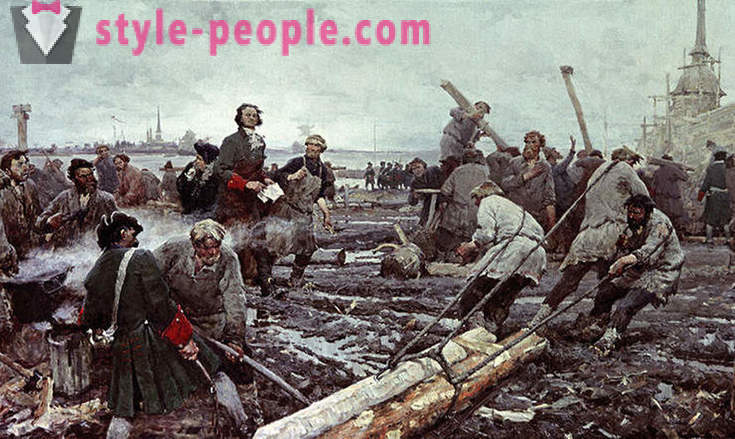
Georgy Pesis. Peter I in St. Petersburg construction.
305 years ago, May 19 (New Style), in 1712 became the capital of Russia St. Petersburg. Why Peter I decided on such a global change? It does not matter whether that young castle with modern architecture came over to his taste than the old-Moscow?
The symbol of a new era
Rumors that the king is going to transfer the powers of the capital St. Petersburg, went a long time. However, Moscow has continued to live their normal business life.
For example, in December 1709 the city was rapidly celebrated victory in the Battle of Poltava - a celebration went for two weeks with festivities and fireworks, in Moscow under the sounds of marches were held army units involved in the battle, and 5, 5000 captive Swedes.
And in three years followed by a decision of the emperor, povergnuvshee many in shock. "Peter did not like Moscow, where at every step there are memories of riots and killings, inveterate antique and the stubborn resistance of superstition and prejudice, - Alexander Pushkin wrote in" Journey from Moscow to St. Petersburg. " - He left the Kremlin, where he was not stuffy, but closely, and on the far shore of the Baltic Sea was looking for leisure, space and freedom for its powerful and restless activity. "

of 10-year-old Peter I comforted her mother during Archer's rebellion in 1682.
There were also other evidence that the king's cold attitude toward patriarchal and "too Russian" Moscow. And this despite the fact that he was born here, spent his childhood and adolescence, many places in the city connected with his stay - Transfiguration, Izmailovo, Lefortovo, Kolomenskoye ... St. Petersburg became the king symbol of a new era - the prosperity and progress, the establishment of economic and political relations with European countries. Peter needed was not only the residence on the coast, but also the capital, where guests can sail from Europe.
Unfulfilled curse Magi
The new capital is being built on the Swedes captured the Earth is called Ingermanland - with great anguish, on the shaky, barely drained from the soil of wetlands, all by hand. Curiously, it de jure belonged to Sweden, and only in 1721, according to Nishtadt contract signed after the end of the Northern War, the city and the surrounding lands were ceded to Russia.
Petersburg (as, indeed, and Moscow) have repeatedly predicted the death. Gloomy predictions from the first days of construction surrounded the city on the Neva. When knocking axes, saws screeched and sounds of thousands of votes announced before the silent neighborhood, lived here chuhonskie Magi, worried that their chase, began to spread rumors of impending trouble.
In particular, they spoke of the "evil" water, which will cause trouble. Meaning the numerous floods, really then tormented Petersburg - remember at least the same Pushkin and "The Bronze Horseman".
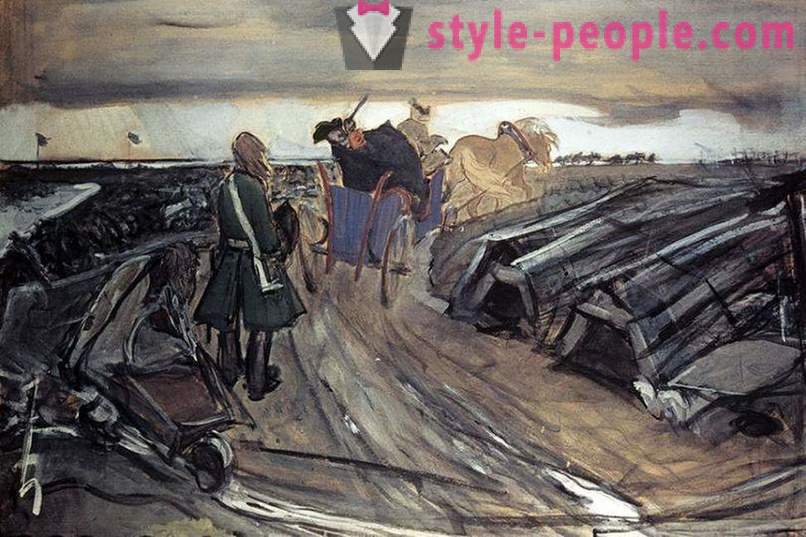
Peter I on the work. Construction of St. Petersburg. Painter Valentin Serov.
About intrigues diviners learned Peter and angry, ordered the burning of sacred pine of the Magi, and execute them themselves. Before the execution of one of them shouted curse words - Petersburg stand for 300 years and then disappear forever. Terrible prophecy does not come true - the city on the Neva had survived three centuries anniversary.
"brilliant mistake" Peter
Peter I made the decision to move the capital in 1704, barely begun construction. He wrote to the St. Petersburg Governor-General Alexander Menshikov: "We are ending with tea in the second or third among the next month to go from here, and tea, If ye God, if you please, in three or four days to be in the capital (Piterburh)." First we went there policymakers behind them - the senators, then on the banks of the Neva reached the royal court, almost all know, many merchants. And some ordinary Muscovites were removed from their homes. A few years the road from Moscow to St. Petersburg was crowded with carriages, wagons and carts with belongings.
We traveled to new places, not only Russian, but also foreigners. The first of the diplomats to the new capital moved representatives of Persia, a year later - the UK. In 1715 in St. Petersburg, the French settled, then the messengers of the Netherlands and Prussia.
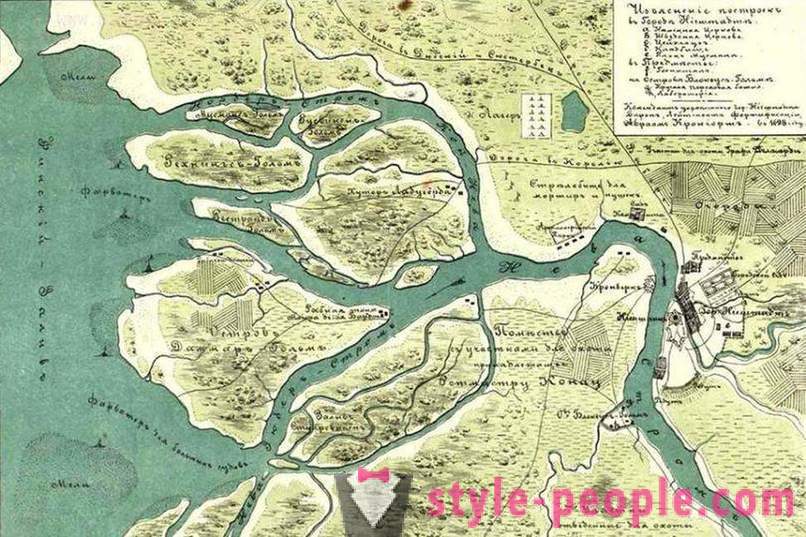
location plan, now occupied by St. Petersburg. 1698.
But not everyone approved of the transfer of the capital from Moscow to St. Petersburg. Some contemporaries of Peter believed that the city is vulnerable to attacks by foreign armies, located far from the center of power, thus losing its importance as the capital.
The creator of the "History of the Russian State" Nikolai Karamzin called "brilliant mistake" Peter the Great's new capital base "on the northern edge of the state, among zybey marsh, in places, by nature condemned to sterility and lack".
"Homes are new, but old prejudices"
Moscow became known as "the capital of the Dowager." Decadent mood and underpinned a devastating fire in 1712 that burned 9 monasteries, 56 churches, 4, 5 thousand yards and, of course, a lot of people died.
However, in Red Square, as before, there was a brisk trade, seething life in China-town, at the gate, in Prechistenka. Noisy festive celebrations with refreshments, dancing and all kinds of entertainment. Build houses, bridges, stone central streets: Tverskaya, Nikitskaya, Sretenka. As Griboyedov wrote, "Since the roads, sidewalks / home and all in a new way. / - House new, but old prejudices. " Nikolai Gogol in "notes Petersburg in 1836" wrote: "It (Moscow) have still Russian beard, and he (St. Petersburg) has a neat German. As stretched as expanding the old Moscow! What she combed! As I moved as stretched to attention dandy Petersburg! ".
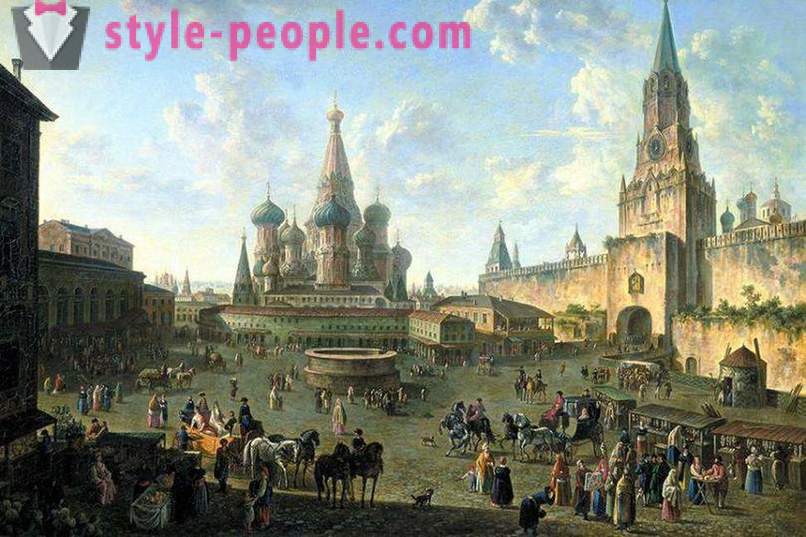
Fedor Alekseev. Red Square in Moscow.
However, many private residences in Moscow by empty, wide courtyard overgrown with grass, rarely heard the sound of carriages. And Moscow blooming bride left no hope to find suitors.
"The decline of Moscow has the inevitable consequence of the rise of St. Petersburg - Pushkin believed that, as we recall, the new capital of treated very cautiously. - Two Capitals are not equally thrive in the same state as the two hearts do not exist in the human body. "
The plague, the invasion of Napoleon
In subsequent years, the share of Moscow has dropped a lot of trouble. In 1771, the city broke a terrible plague. Everywhere continually fires were burning - the burning of the dead was the only effective tool against infection. However, hundreds of people were dying every day.
Hardly stopped the sea as rumor has brought the rumor about the uprising Pugachev. The city authorities and the nobility horrified waited for news about the movement of the large army of rebels. They, however, did not reach Moscow. Of Pugachev have caught, taken to the city in an iron cage and executed on Bolotnaya Square.
In 1812, Moscow has survived the invasion of Napoleon - he believed that capturing Moscow and All Russia will capture. Along with the arrival of the invaders huge city seized violent flames that raged for several days. Old, wooden Pervoprestolnaya was virtually destroyed.
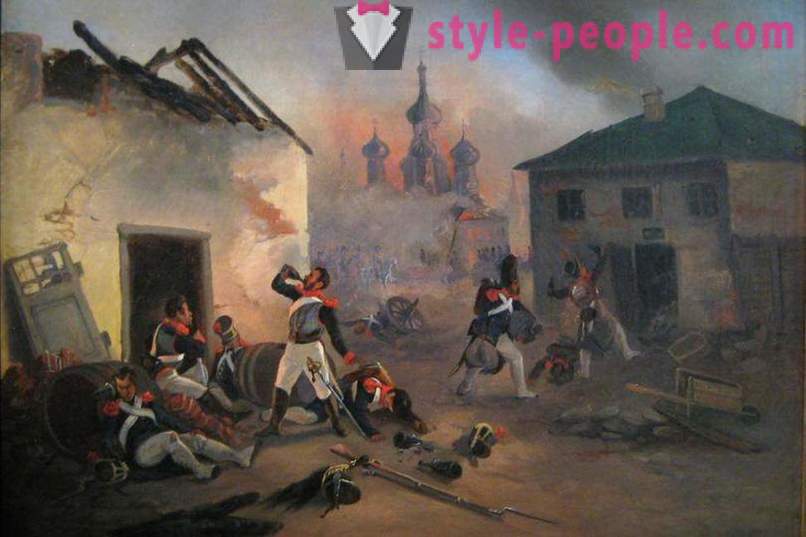
The French in Moscow. 1812.
But the optimist Griboyedov wrote that "The fire helped her a lot to the decorations." After the global disaster Moscow became rapidly built up, there was a lot of beautiful, good-quality buildings. Many of them we can see today.
Last Emperor visit
After the capital was in the white-stone still regularly frequented by the nobles, and sometimes the king bestowed it to his attention. In 1721-m Transfiguration of the palace interiors were updated - here Peter stayed where noted conclude the Treaty of Nystad. Two years later, he again came to Moscow to celebrate the victorious end of the Persian campaign.
In 1724, Peter the Great arrived in the white-stone for the last time - for the coronation at the Assumption Cathedral of his wife, the future Empress Catherine I. In the following years, in Moscow held a solemn ceremony of accession to the throne of the Russian monarchs.
By the way, in 1727-m, already under Peter II of, Moscow again, albeit briefly became the capital of the empire, for political reasons. However, three years later the Queen Anne Ioanovna back yard in St. Petersburg, which has retained this status for almost two centuries.
In the 60 years of XVIII century white-stone began to return representatives of the famous dynasties of Moscow - princes and counts Golitsyn, Dolgorukov, Sheremetevs, Volkonskie, Naryshkin, Yusupov, Saltykov, Cherkassky, Buturlin. The city found refuge and representatives of the new nobility - eagles, Razumovsky, Apraksin, Demidov, Stroganoff, Osterman.
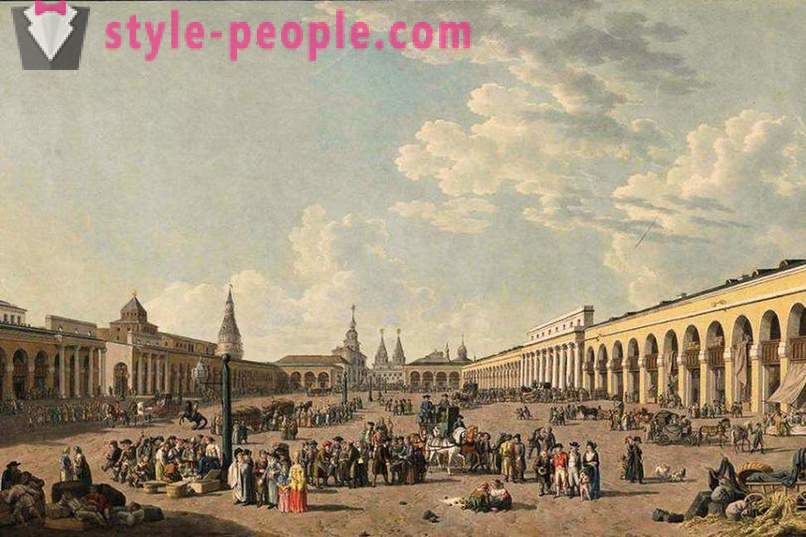
Old Square in Moscow.
Moscow's population itself decreases. If the end of the XVIII century, the city is home to about 175,000 people, and in St. Petersburg - about 90 thousand, by 1862 the situation changed dramatically: in St. Petersburg, there were more than 500 thousand in Moscow is almost 378 thousand. At the beginning of the XX century, to a decline of the empire, the population of St. Petersburg reached a million citizens.
When the enemy is at the gates of
"Dowager capital of" regained the status of the country's main city in March 1918, when the Bolshevik government headed by Vladimir Lenin, then moved from Petrograd to Moscow already.
Resolution of the IV Extraordinary Congress of Soviets read: "In the context of the crisis facing the Russian revolution at the moment, the situation in Petrograd as the capital has changed dramatically. In view of this Congress decides that pending changes in these conditions the capital of the Russian Soviet Socialist Republic temporarily moved from Petrograd to Moscow. "
While German troops were a few dozen kilometers from the city, and the enemy's strategy has already prepared plans to seize Petrograd. And then everyone remembered the words of skeptics who under Peter I talked about the vulnerability of the city due to its geographical location and proximity to the border.
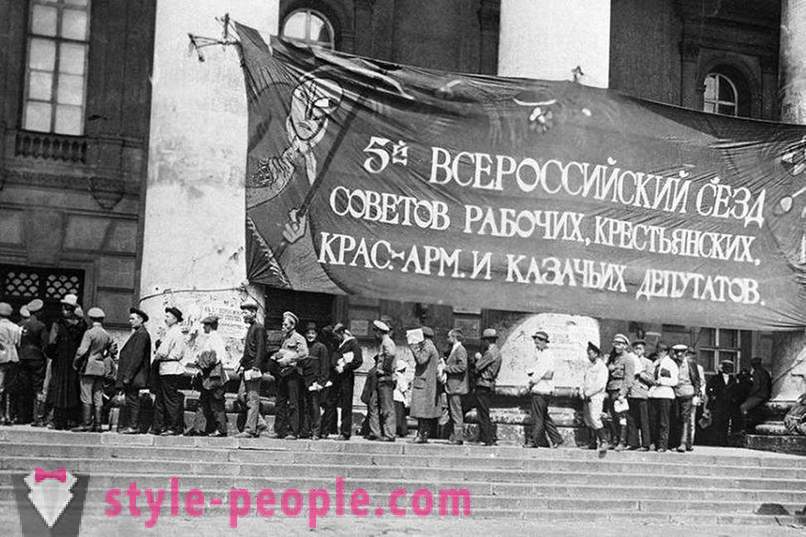
Delegates of V All-Russian Congress of Soviets stand in front of the Bolshoi Theater. 1918.
In addition, the new government brought concern numerous deserters soldiers, former officers, refugees and people, who were suspected spies and saboteurs, and they settled in the capital of Peter.
The newspaper "The Banner of Labor," March 9, 1918 wrote: "Petrograd is the object of attacks and attacks, in the second case, he also faces a constant threat of attack, not only on land but also by sea ... The transfer of the capital to Moscow is motivated by the fact that the capital city state can not be in 200 miles from the area occupied by the enemy. "
The next day, the newspaper "New Word" reported: "Yesterday arrived in Moscow a number of trains from Petrograd with the government and government agencies ... Together with Lenin, Zinoviev came and managing director of Council of People's Commissars of Bonch-Bruevich." The resolution of the Congress of Soviets in 1918, spoke of a "temporary" transfer of capital. But since then, nothing has changed - Moscow remained the main city of the USSR, then - Russia. But St. Petersburg, torn during the Revolution, and have not lost a certain influence and authority. So, perhaps, Pushkin and his judgments about the impossibility of the state to flourish two hearts hurry.
Valery Burt













































